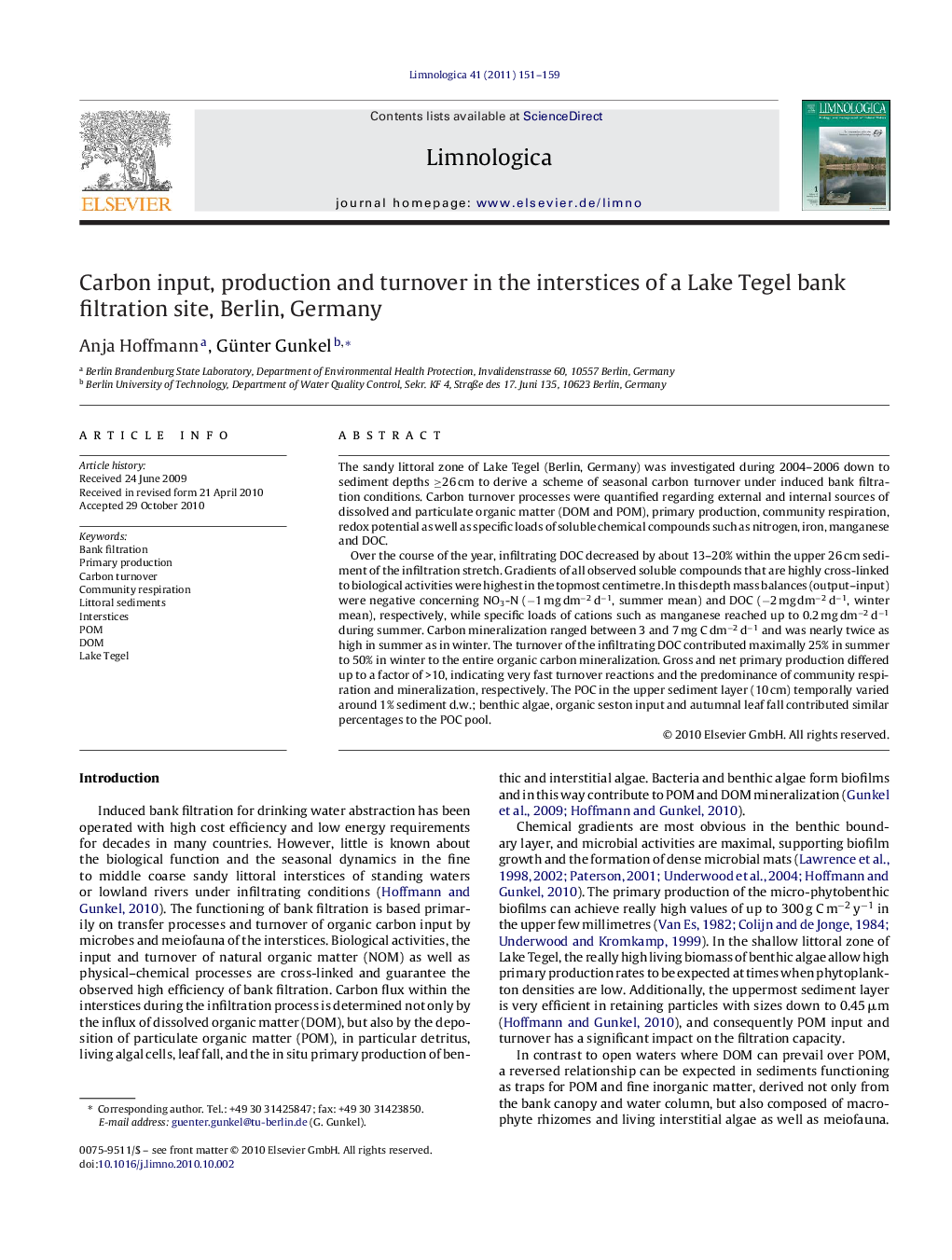| Article ID | Journal | Published Year | Pages | File Type |
|---|---|---|---|---|
| 4400442 | Limnologica - Ecology and Management of Inland Waters | 2011 | 9 Pages |
The sandy littoral zone of Lake Tegel (Berlin, Germany) was investigated during 2004–2006 down to sediment depths ≥26 cm to derive a scheme of seasonal carbon turnover under induced bank filtration conditions. Carbon turnover processes were quantified regarding external and internal sources of dissolved and particulate organic matter (DOM and POM), primary production, community respiration, redox potential as well as specific loads of soluble chemical compounds such as nitrogen, iron, manganese and DOC.Over the course of the year, infiltrating DOC decreased by about 13–20% within the upper 26 cm sediment of the infiltration stretch. Gradients of all observed soluble compounds that are highly cross-linked to biological activities were highest in the topmost centimetre. In this depth mass balances (output–input) were negative concerning NO3-N (−1 mg dm−2 d−1, summer mean) and DOC (−2 mg dm−2 d−1, winter mean), respectively, while specific loads of cations such as manganese reached up to 0.2 mg dm−2 d−1 during summer. Carbon mineralization ranged between 3 and 7 mg C dm−2 d−1 and was nearly twice as high in summer as in winter. The turnover of the infiltrating DOC contributed maximally 25% in summer to 50% in winter to the entire organic carbon mineralization. Gross and net primary production differed up to a factor of >10, indicating very fast turnover reactions and the predominance of community respiration and mineralization, respectively. The POC in the upper sediment layer (10 cm) temporally varied around 1% sediment d.w.; benthic algae, organic seston input and autumnal leaf fall contributed similar percentages to the POC pool.
